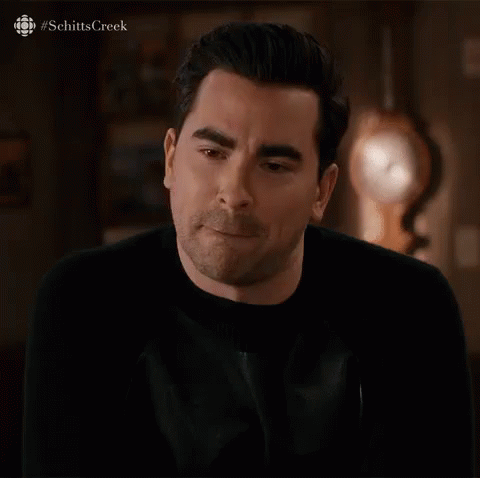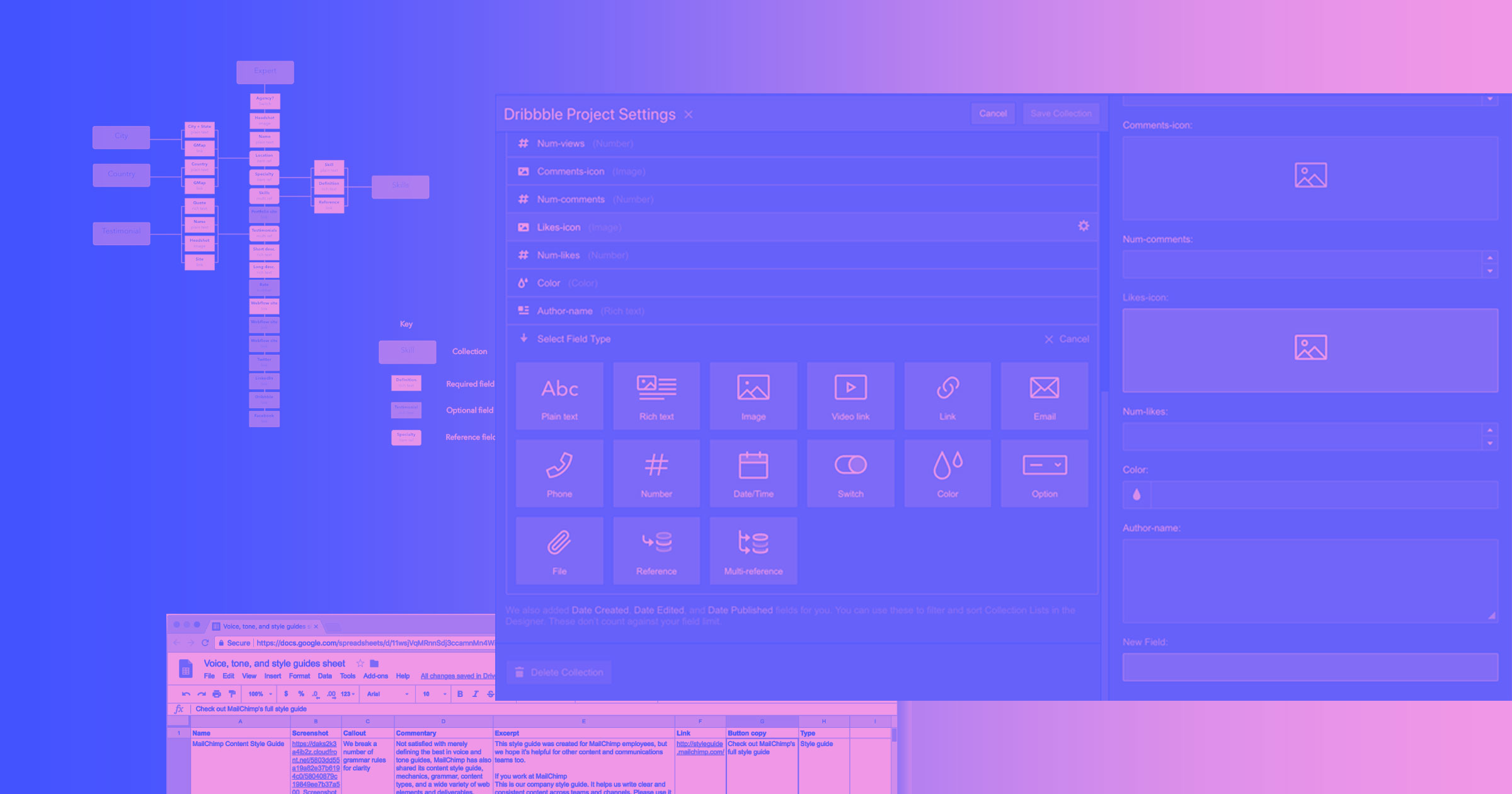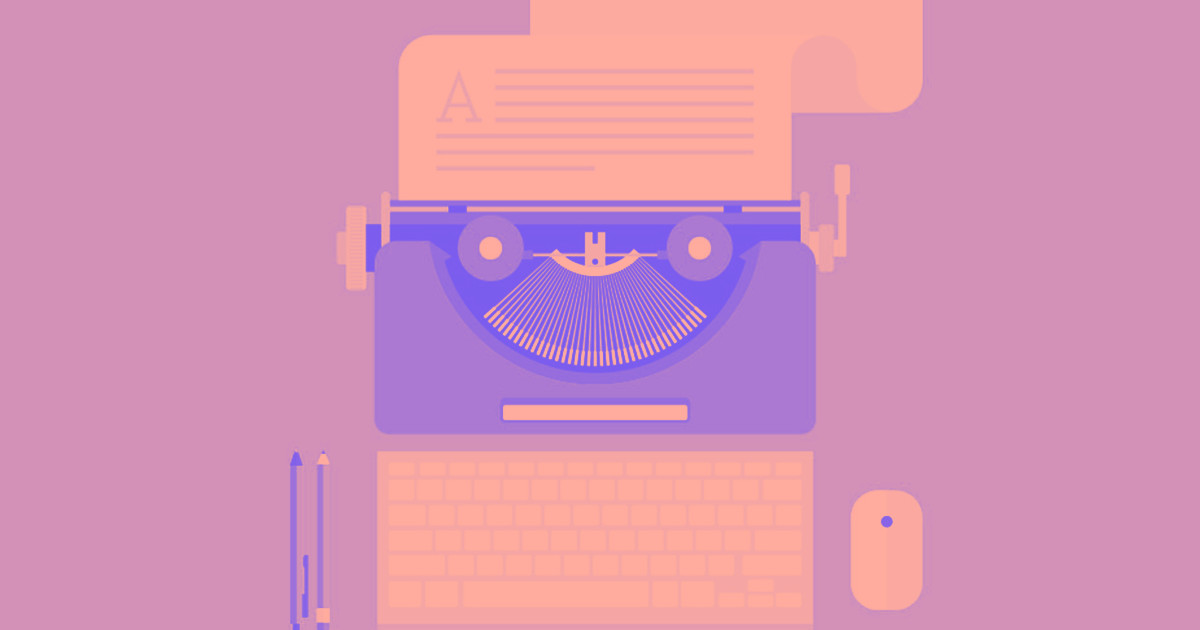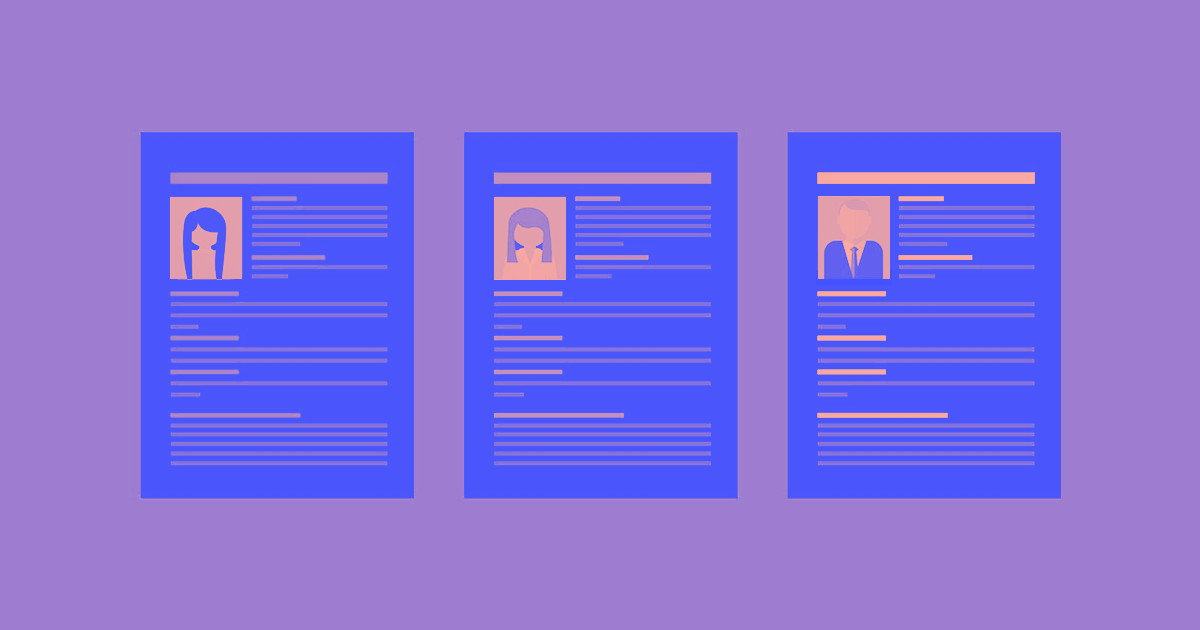I’m a writer — and this is the first thing outside a rambly Facebook post I’ve written in almost two years. I’d tell you I’ve been suffering from writer’s block, but that’s not true — fear is the culprit. And wrangling fear takes work. The good news? It’s the kind of work that’s manageable, rewarding, and reusable every time fear shows up and tries to take over.
In a Copyblogger piece I read years ago, Lisa Barone said she doesn’t believe in writer’s block.
Writer's block is an excuse. I believe in fear and being burnt out. Writer's block is what we call those things when we don't want to admit to them.
Fear or burnout? Oof. That resonated. Like really resonated. I knew deep down in my gut’s gut that she’s bang on.

I’ve never dealt with burnout, but fear and I? We go waaay back. Like way back circa leg warmers the first time they were a thing.
Even when I resist the idea that I’m not creating because I’m afraid — thinking I stopped writing because I just don’t have anything to say or because my life got busy or hard — if I check in with myself, get real honest, and take a close look at why I’m not writing, the answer is fear. Every time: fear.
Fear I’m a horrible writer.
Fear that what I have to say has no value.
Fear I’ll say it wrong.
Fear it’s been said. And said better.
Fear no one will read it.
Fear someone will read it.
Fear.
Fear.
Fear.
FEARRRRRR.
Writing makes me feel alive, accomplished, and proud. Two years of not writing is a lot of lost words. A lot of regret. And a lot of not showing up for myself.
I’m 43! I’d like to spend this next part of my life running towards Scary Things that push me to change and grow, not away from them.
So what? What does this have to do with you, fellow creative? Well. A lot! I’ve been learning about accepting and managing my fear in order to stop letting it drive my bus.
How to overcome creative block
If you’ve also been feeling paralyzed by fear, here are some ideas to get yourself out of a creative slump.
1. Make friends with your brain
If you can't learn to travel comfortably alongside your fear, then you'll never be able to go anywhere interesting or do anything interesting.
— Elizabeth Gilbert, Big Magic
Our amygdala — that unevolved, primitive part of our brain — is wired to keep us safe. To find and protect us from danger. And as far as it’s concerned? Fear. Means. Danger.
A small whiff and it’s locking the doors, turning off all the lights, and barking orders to hide in the pantry until further notice. It really has the most wonderful intentions. Back in its heyday (lions and bears and caves, oh my!) that “lizard brain” was instrumental in … you know … keeping us alive. And it for sure continues to be useful when we’re in actual danger. But I’m not sure responding to fear of rejection is what the lizard brain was designed for.
Great intentions mixed with outdated intel can result in total chaos and keep us stuck. Thankfully, this is all totally manageable. Just because we’re being yelled at to run and take cover, doesn’t mean we have to obey. And I’ve discovered that one of the best ways to stay grounded and manage my primitive brain is to make nice with it. Approach it with compassion and gratitude. Say, “I see you and I understand why you’re here.”
To help me avoid judgement and stay in compassion, I named my amygdala. So allow me to introduce you to … Penelope.
And as woo-woo as it may seem, it’s a strategy I love and highly recommend. My friends and family are all well-acquainted with Penelope. Making her part of the conversation has helped me be patient and kind when she’s trying to shut everything down and keep me safe.
Naming her has also helped me accept that fear will be with me always … which leads me to my next suggestion.
2. Accept the discomfort of fear
I made a decision a long time ago that if I want creativity in my life – and I do – then I will have to make space for fear, too. Plenty of space. I allow my fear to live and breathe and stretch out its legs comfortably. It seems to me that the less I fight my fear, the less it fights back. If I can relax, fear relaxes, too. In fact, I invite fear to come along with me everywhere I go.
— Elizabeth Gilbert, Big Magic
I used to believe that the secret to being a high-functioning adult meant stamping out insecurity, fear, doubt. Done. Gone. Goodbye.
And once those were sorted, I’d be elevated to new levels of consciousness where pedestrian struggles were a thing of the past. I’d meander about on a wise, winged turtle named Henry.
So not only was I feeling afraid, I was impatient with myself for feeling afraid. Which made it impossible to think, nevermind tap into my creative self.
And what I’m learning (it’s a daily lesson, really) is that my vulnerabilities aren’t going anywhere — except everywhere I go always and forever until the end of time. And it turns out — insert theatrical gasp — that’s okay!
Fear is normal. It’s a sign that we’re human. Not that we’re weak or broken or useless.
I like this acceptance step because I get to channel my inner scientist — drop the judgement and get curious. I take a minute to describe what I’m feeling: “My chest is tight. My jaw is clenched. My breathing is shallow.”
And then I name it: “I’m afraid. This is fear.” Maybe it’s one of fear’s cousins: doubt, dread, panic? Here I might put pen to paper and write down all the reasons I’m afraid until my hand hurts.
Or, maybe I’ll just let it float around in my brain for a bit. I’ll picture myself driving a bus. I’ll pull over and walk to the back where fear is and say, “Hey. I see you. It makes a lot of sense that you’re here. You can stay, but we’re gonna keep going and you don’t get to drive, okay?”
Moving into an observer role has this shrinking effect for me. Like when I’m afraid of what lurks in the dark and I switch on a light: “Oh hey, Penelope — it’s you. Makes sense that you’re here. Cuppa tea?”
Naming and accepting the fear also helps me become conscious of it. I stop flailing about trying to resist, deny, fix, control without even realizing I’m doing it. I make peace with fear. Maybe not completely, but it’s a start.
You will want to run from the fear of doing bad work. Don’t! Stay put. Feel that uncomfortable feeling of self-doubt. See fear for what it is — a feeling.



















Build your online portfolio
Build and visually design a full portfolio website in just 21 days — with our free online course.
3. Make a list of obstacles
If you wrote down all of the reasons you’re afraid in the last step, you got a head start. All those fears? They’re obstacles. They’re what’s standing in the way of you starting this project (be it an essay, design, illustration, etc.).
What comes up for you? Write. It. Down.
For example, when I think about my goal of doing stand-up comedy … well, a bunch of stuff comes up, as you can imagine:
- My ideas are boring
- I’ll forget my jokes
- I’ll find out I’m not funny
- I don’t know how to book stage time
But now my fears are no longer floating around in the ether, circling my head like a cloud of gnats I can’t escape. I’ve plucked each one from orbit and turned them into individual obstacles I can see and tackle.
4. Address obstacles as your future self
Pretend you’ve completed the project and it’s the best thing you’ve done. It’s six weeks later, your project won an award, you got a promotion, and you gave your Nobel Peace Prize acceptance speech for your creative work.
Now take out that list of obstacles you just made and interview the red-carpet version of yourself. Assume the place of future you — the one who’s already achieved this goal — and break down how you addressed each obstacle on the list.
- “I sat down every morning at 5 a.m. when I was fresh, set the timer, and spent 2 hours focused on the work.”
- “I Googled it.”
- “I kept a notebook of ideas.”
- “I hired a mentor.”
- “I went to the library for inspiration.”
And now you have a solid to-do list. A place to start.
This is where I always want to throw myself on the floor like a toddler and scream, “But I. Dooon’t. Knowww.”

5. Imagine you do know
There are for sure things we don’t know. But the things we truly don’t know tend to be fact-based — and that’s what Google’s for! When it comes to making decisions about our lives and our creative pursuits, “I don’t know” is more about making excuses to avoid discomfort. It’s about being unsure and unwilling to try, to fail, to make a decision.
Make “I don’t know” off-limits. When you have the urge to say, “I don’t know what to do next. I don’t know what colors to try. I don’t know what fonts to pair.” Challenge yourself. Return to that award-winning, future version of yourself and ask, “What if I did know? What would I do then?”
Then be willing to try a bunch of things that don’t work. Be willing to move past your inner critic and fail. “I don’t know” blocks you. Don’t give yourself the option of saying it.
6. Ask better questions
Your brain will set to work solving the puzzles you give it. And if you’re stuck in fear, the puzzle you’re trying to solve likely sounds something like,“Why am I so horrible at this?” or “Why can’t I do this?” and “Should I even be doing this?” Or, my personal favorite, “What. Is. Wrong. With me?”
Your amygdala will answer with some variation of, “BECAUSE YOU’RE THE WORST THIS IS NOT POSSIBLE THIS WILL KILL YOU AND EVERYONE YOU LOVE IT’S BAD BAD BAD STAY PUT DOING NOTHING WHERE IT’S SAFE FOREVER DISCOMFORT IS DEADLY DIE DIE DIE DEAD.”
Ahem.
Instead, ask your brain questions like:
- What do I need to solve this problem?
- Where can I find inspiration?
- When do I feel inspired to do my best work?
- What can I do today to make myself feel proud?
- What are the things about this activity that make me happy? What kind of art/design makes me happy?
- What’s the next smallest step I can take towards completion? (A five-minute sketch? Pick up a paintbrush? Make a moodboard?)
Your brain will happily get to work finding answers to those questions instead of churning out all the reasons you suck.
7. Don’t waste energy debating yourself
As soon as I decide to do something I’m excited about, right on queue, Penelope tries to pull me into a creative thinking debate. She gets loud and obnoxious with her list of reasons why what I’m about to do is a bad idea.
When I expect and plan for Penelope’s arrival, I avoid the energy-sucking, back-and-forth debates that keep me stuck. I make a plan to stick to my choices and figure out how to make them great. When Penelope chimes in, I have some answers ready:
Penelope (my “primitive” brain): YOU CAN’T DO THIS MAYBE QUIT.
Me: I’m going to try anyway.
Penelope: THIS IS TOO HARD MAYBE GET A SNACK AND REORGANIZE YOUR SPOTIFY PLAYLISTS.
Me: I set a timer to focus for an hour.
Penelope: THIS WILL NEVER WORK.
Me: I’m willing to fail.
This step is a real energy saver. This is what we’re doing, brain. I hear you. I see you. Now have a seat.
8. Shush the voice of perfectionism
If you really do want to write and you’re struggling to get started, you’re afraid of something. Remember, it’s only you and the page. The wastepaper basket is your friend — it was invented for you, by God.
— Margaret Atwood
With that obstacles/to-do list in hand, set a timer for an hour and get to it. I had to start with 30 minutes and work up to an hour. You can play around and see what works, but don’t skip setting the timer. I tried this a couple of years ago, just noting the time and keeping an eye on the clock, but I could never make it work. I’d give up or completely forget I’d set a focus goal.
When I revisited this strategy recently, I actually set a timer (I just used the one on my phone) — something about the countdown made me take the challenge seriously. Brains, eh? So persnickety and magical.
When you ask yourself to work quickly, you remove time for distraction, delay, questioning, and time-wasting. The pressure of time eliminates room for perfectionism — you can’t work quickly and perfectly.
Don’t let the task dictate the amount of time it takes. You decide ahead of time how much time to spend on it, and then focus and get it done in the time given.
9. Make something ugly — mighty ugly!
Creative professionals often have a hard time with this one. What you’re about to do might suck. Give yourself permission to create something imperfect.
Get out of your comfort zone and make something awful! Do it. Do it badly. Do it badly with gusto. If you need inspiration, Vancouver creative badass Kim Werker literally wrote the book on it: Make It Mighty Ugly: Exercises & Advice for Getting Creative Even when It Ain’t Pretty.
In any medium, I also start out assuming—even planning—that I’ll delete the first thing I do, whether it’s a paragraph or the first few rows of a scarf. That makes those first steps far less precious and therefore less intimidating.
― Kim Werker, Make It Mighty Ugly
There’s a new driver in town
These strategies work. And I know that because using them got these words from my head onto your screen. Which, frankly, after two years of silence, feels like a miracle.
But I’m gonna go ahead and credit a strange brew of self-compassion, tough love, and hard work. Go me. Go us! I can’t wait to see what you create after you’ve taken fear out for coffee and dropped the news that they’ve been demoted to passenger.
Feelings are my most favorite thing to talk about. If you have any after reading this, tweet at me!
Resources
- How Lisa Barone Writes
- The Gap by Ira Glass
- Got Anger? Try Naming It To Tame It (self-regulate by boosting your emotional granularity)
- Life Coach School podcast episode # 152: Fear































